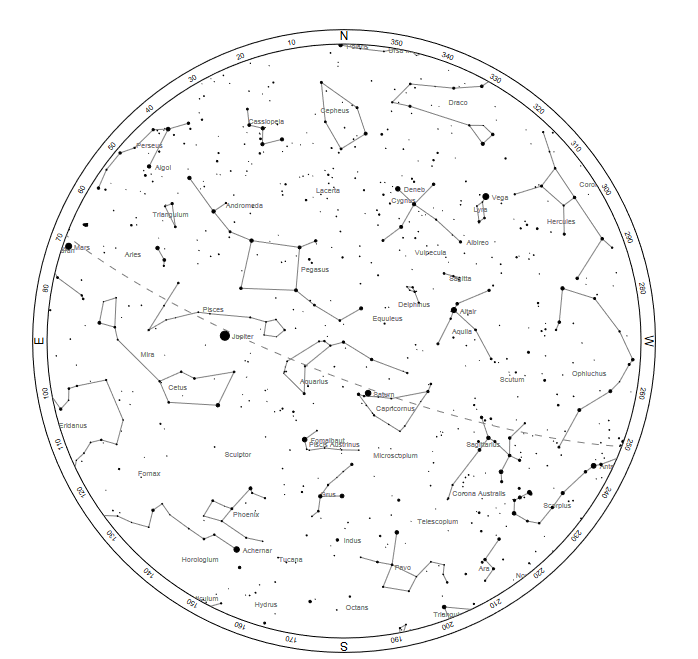I want to talk about stargazing. Now, at it's simplest, all you have to do is go outside at any time of day and look up and you'll see at least one star (remember, the Sun is a star!). Of course, if you want to see more than one, you should go outside at night to increase your chances of seeing some stars. If you just want to look up at the majesty of the night sky, that's great! However, if you want to do a bit more, than let's do a bit more. What would that be? Let's take a look!

Image courtesy of kronerda from Flickr through the Creative Commons License Attribution 2.0 Generic (CC BY 2.0)
I'll say that first, this is written with the assumption that you're in the Northern Hemisphere. This doesn't actually matter for almost all of this but when I get to talking about things to do, I'll be referencing Northern Hemisphere constellations and stars as those are the ones I'm familiar with. Besides that, all of this should be applicable to any part of the Earth.
Now, to begin, you'll want to know when sunset is in your area. This is important because while you can immediately start as soon as the sun goes down with stargazing, and in some cases before, knowing the precise time is helpful. This can be found at many different websites. To save you some digging, I've made a handy list of a couple of them for you below. There's also several smartphone apps that can be used (I like LunaSoCal).
The first one is a little easier to use but I prefer the US Naval Observatory site. Either way, once you know the sunset time, you can figure out when twilight ends. Now, there's multiple kinds of twilight (civil, nautical, and astronomical) but since we're keeping it simple, let's just thumbnail one. You're going to want to go out about thirty minutes after sunset (this is roughly civil twilight). This will give the sky a chance to get darker, so you'll be able to see things better. If you're just using your naked eyes to see things, this should be fine. If you're using anything else, like binoculars or even a telescope, you'll get better results if you wait until later.
Now, if you just want to look at some stars, that's all you have to do. You just go outside! Look at the stars! Enjoy the view of the Moon if it's out! Know that you're connected to a long, long line of people who've done the same. But you probably do want to know what you're looking at and that's going to take us to star charts.
There's several ways you can do this. You can use a smartphone app. There's a bunch available, such as Stellarium, that'll allow you to just point your phone at the sky and it'll show you what you're looking at. However, you can check out several websites that have star charts and that can be printed if you need. So I'll give you another set of links to check out! Fill out the location and time (another reason to know when the sunsets around you!) so you get an accurate chart.
Now you might notice that Sky and Telescope uses Heavens Above for their star charts so maybe you're going to ask me, "Why did you put both there?" Well, Heavens Above also lists lots other things you can see in the sky as well, such as satellite passes, and I thought you might want to poke around on there. Be aware, they use some technical terms but they also have visual representations (usually) so it's not awful and you can learn the terms later if you want. That's the great thing about star gazing, there's always something new to learn!
Let's look at a star chart real quick so we can orient ourselves. This is just like a regular map, except for the sky. So when you go out, be sure you know which way is which. Unless you're under a good dark sky, you will not see every star that is listed on this chart. What you'll see depends on the brightness of the stars (referred to as magnitudes), the weather, and how much light pollution (light from things like street lights, porch lights, signs, and the like) you have in your area. Let me point out a few things to notice.

There's a few other features on there, such as the names of the stars and constellations and the compass degrees along the edge, but I feel those are fairly self explanatory. While a star chart like this is good for just a certain time and place, if you decide to do this more often, I'd recommend a planisphere. A planisphere is a star chart that you can rotate for all times of the year and it'll show you what's visible at that time. You can find them for sale online. Just make sure if you get one, you get one that has the layout for your general latitude (good within 10°).
OK, you've figured out the sunset time, you've got some way of figuring out what you're looking at, now what? Where should you go? Well, anywhere you can see the night sky! If the best you can do is a parking lot, then go into a parking lot! While light pollution will wipe out a lot of the visible stars, except under the most polluted of skies, you're still going to see something.
However, you should look for a place with a clear view of the sky and as few nearby light sources (such as porch lights, streetlights, and such) as possible. When you get there, you can start but be aware that your eyes will need time to adjust to the darkness. It takes hours for eyes to fully adjust to low light but you can see differences even after a few minutes. Be careful about exposing your eyes to light, such as from a cellphone, car headlights, or other sources, as they'll immediately ruin your night vision. If you can, use a red light source to do things like read your star chart or move around. If you're able to travel a little, you might check out maps that have light pollution indications on them for ideas of where to go. There's two below to check out.
To make your viewing more comfortable, you can bring things like chairs, blankets, and snacks. The best viewing is when the air is still and cold. Since you won't be moving around a lot, be sure and dress a little warmer than you'd normally need for the season. If you're going to wander away from your car, be sure you know how to find it again because it will be dark after all.
Some will say to keep a journal of your viewing. If this is of interest to you, Sky and Telescope has some information on how to keep one as does the website Stargazing in the UK. I won't be covering it though as I want to keep this section a very simple how-to.
.What should you try and do first? Well, the first thing to try would be to locate Polaris, in the constellation Ursa Minor. This is the North Star and it sits almost on top of something called the celestial pole. It also means that's north. It's good to get your bearings so you can use that star chart after all.
Now you can find north with a compass or with a smartphone but how about we find it with the stars themselves? First, find the Big Dipper. The Big Dipper is what's called an asterism, which is a pattern of stars that isn't actually a constellation. It's in the constellation Ursa Major and it looks like the below picture. See if you can find that shape in the sky. Once you have, you'll need to find the two stars on the edge of the pot/dipper away from the handle and then follow them up, like you see with the blue dashed line. You'll find a dimmer star not too far away and that's Polaris. Congrats! You now know which way is north!

Using your new found knowledge of which way is north, start trying to identify stars, planets, and constellations that are on your star chart. Orion is a good one to start with in the winter months and Cygnus and Scorpius being good summer constellations. If you decide to move on to more in-depth astronomy and star gazing, knowing where the constellations are located and how to find them are incredibly useful because things like meteor showers and comets are referenced by what constellation they happen to be near. Looking for deep sky objects, like nebula, also rely on knowing where stars and constellations are to be available to find them.
I hope you enjoyed this! If you want to learn more, I do intend to put out another page with more information. If you can't wait, well, here's a few links to check out as well as a link to astronomy clubs in the United States. Happy star gazing!